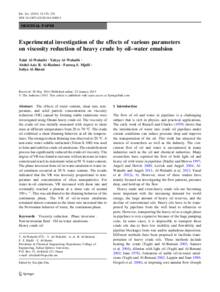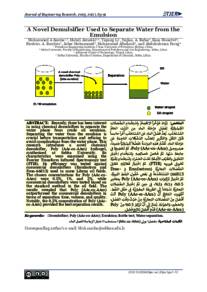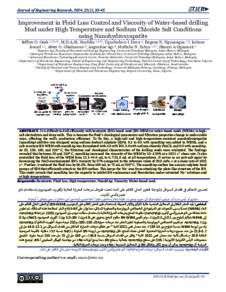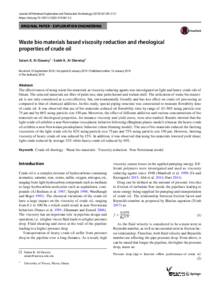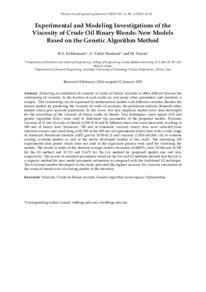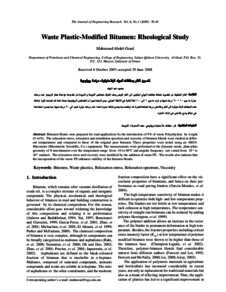Document
Experimental investigation of the effects of various parameters on viscosity reduction of heavy crude by oil–water emulsion.
Identifier
DOI: 10.1007/s12182-014-0009-2
Contributors
Al-Wahaibi, Yahya., Author
Al-Hashmi, Abdul-Aziz R., Author
Mjalli, Farouq S., Author
Al-Hatmiyah, Safiya., Author
Publisher
China University of Petroleum Beijing.
Gregorian
2015-03
Language
English
Subject
English abstract
The effects of water content, shear rate, temperature, and solid particle concentration on viscosity reduction (VR) caused by forming stable emulsions were investigated using Omani heavy crude oil. The viscosity of the crude oil was initially measured with respect to shear rates at different temperatures from 20 to 70 °C. The crude oil exhibited a shear thinning behavior at all the temperatures. The strongest shear thinning was observed at 20 °C. A non-ionic water soluble surfactant (Triton X-100) was used to form and stabilize crude oil emulsions. The emulsification process has significantly reduced the crude oil viscosity. The degree of VR was found to increase with an increase in water content and reach its maximum value at 50 % water content. The phase inversion from oil-in-water emulsion to water-in-oil emulsion occurred at 30 % water content. The results indicated that the VR was inversely proportional to temperature and concentration of silica nanoparticles. For water-in-oil emulsions, VR increased with shear rate and eventually reached a plateau at a shear rate of around 350 s−1. This was attributed to the thinning behavior of the continuous phase. The VR of oil-in-water emulsions remained almost constant as the shear rate increased due to the Newtonian behavior of water, the continuous phase.
Member of
ISSN
1672-5107
Resource URL
Category
Journal articles

